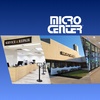"Almost every college across the country has one of these systems," he says. "About 175 have the same system from AT&T."
Cuppett says HUDS maintains four separate accounts for each student on its server.
"You have your count account that counts you at the dining halls, you have a Crimson Cash account, and you have a vending shadow account," he says.
The shadow account is an account within Crimson Cash that limits vending machine transactions to $25 per day, he explains.
When you swipe in at a dining hall, the cardswiper queries the HUDS server and gets your meal balance and permission information, Cuppett says.
For undergraduates on the regular meal plan, the meal balance reflects the number of meals eaten that week, and there is no limit to the number of times you may swipe in, he says.
"Your count account resets on Sunday at 12 a.m.," Cuppett says. "There is no technological level imposed on the system" regarding the number of meals undergraduates may eat.
However, graduate students and other students on limited meal plans start the week with meal counts that decline as meals are taken, he says.
Once you are authenticated by the system, the swipe machine emits a loud sound--one beep for first-years and a series of beeps for upper-class students.
According to Cuppett, the long beep sequence for upper-class students was implemented to allow dining hall checkers to see the students' house affiliations on-screen so that students and dining hall staff could get to know one another.
Plus, "the number of freshmen and the constraints of moving them through the dining halls fast" prevented HUDS from giving first-years a long-beep sequence, too.
What About the Cards?
David R. Wamback, coordinator of ID cards and information retrieval for HUID, says, "The general `Harvard Card' is pre-printed with a specific design. We use a DataCard 9000 machine to `personalize' each card. It is a modular system that a) encodes the mag-stripe and tests the encoding, b) adds graphics such as the bar-code, faculty and general role, c) prints an image of the individual using a dye sublimation process, d) adds a protective coating, e) embosses the card with the ID number, name, and faculty code, and finally, f) coats the embossing for readability."
"This is done at a rate of 500 cards per hour for bulk issue," Wamback says. "Without this machine, it would be impossible to meet the demands of the University for machine-readable photo cards without tripling both the personnel and the space in this office."
"The average cost per card is approximately $3.50 per card plus labor," Wamback adds.
Read more in News
The Dangers of a "Liberal Tendency"












